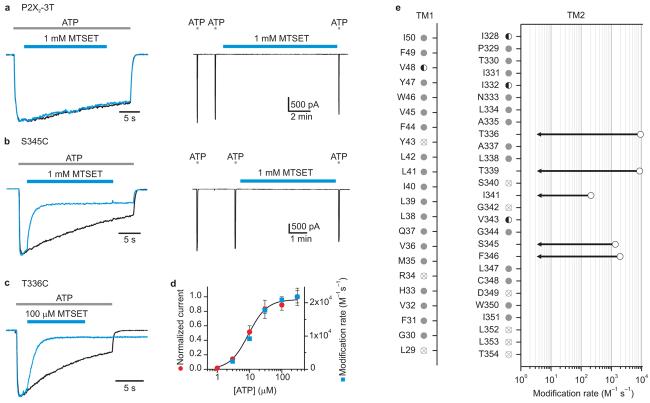Figure 2. State-dependent accessibility of extracellular MTSET in P2X2 receptor channels.
a, P2X2-3T is insensitive to 1 mM MTSET in both the absence and presence of ATP. Left panel shows superimposed scaled current traces in response to ATP without (black) and with (blue) the application of MTSET (indicated by bar above the current trace). The two current traces were recorded at a 2 min interval from the same cell. Right panel shows a continuous current trace where application of MTSET for 10 min in the absence of ATP has no detectable effect on the current activated by ATP after correcting for rundown. Rundown was assessed using two applications of ATP (2 s duration; 90 s interval) prior to MTSET addition. b, Superimposed scaled current traces for S345C demonstrating modification by MTSET in the presence of ATP (left panel). No modification is observed after applying 1 mM MTSET for 300 s in the absence of ATP (right panel). We conservatively place an upper limit for the modification rate in the absence of ATP at < 3 M−1s−1., the value that would be obtained if the time constant for modification was 300 s at 1 mM MTSET. c, Superimposed scaled current traces for T336C demonstrating that MTSET inhibits the current in the presence of ATP and slows channel closing. d, Plot of MTSET modification rate at T336C (blue squares) or macroscopic current activation (red circles) as a function of ATP concentration. The solid line is a fit of a Hill equation to the concentration-dependence for activation by ATP. Each symbol is the mean of four experiments and error bars are S.E.M.. e, Summary of the effects of MTSET on Cys substitutions in TM1 and TM2 and the corresponding modification rates. Most mutants were not modified by MTSET (gray circles). Modification rates for T336C, T339C, I341C, S345C, and F346C obtained in the presence of ATP are shown as open black circles. Each point is the mean value of four to seven experiments with error bars (S.E.M.) that are smaller than the symbols. In each of these cases the modification rates in the absence of ATP are below that which we can detect (∼3 M−1s−1). Modification rates were not calculated for V48C, I328C, I332C, and V343C (half filled circles) due to the complexity of the response to MTSET (see Supplementary Fig 3). Reactivity with MTSET could not be examined for some mutants (crossed out circles) because they show minimal responses to ATP (L29C, R34C, Y43C, S340C and D349C) or desensitize too fast to study (G342C, L352C, L353C and T354C). Disulfide bond formation in these Cys mutants could not be detected, as the application of 5 mM DTT for 10 min has no detectable effect. An EC50 concentration of ATP was used for each mutant (see Supplementary Fig 1; Table 1), except for T336C where a range of ATP concentrations were examined in d.

